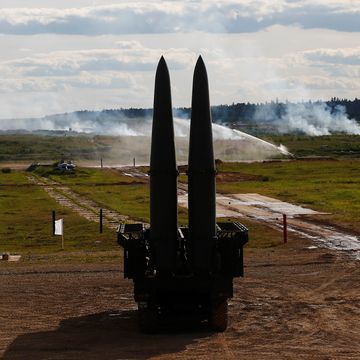This story is a collaboration with Biography.com.
Archaeologists have made a groundbreaking discovery in the shadow of Mount Vesuvius: the long-hidden villa that may mark the final resting place of Augustus, Rome’s first emperor, buried for centuries under volcanic ash since 79 AD.
Ongoing excavations at the Somma Vesuviana site in southern Italy have unearthed a structure predating the infamous eruption of Mount Vesuvius, boasting architectural details in line with the home of a Roman emperor.
The discovery, led by University of Tokyo archaeologists, features a room that potentially served as a private bath, complete with a kiln for heating—luxuries that lend credence to the long-held legend that Augustus lived, and ultimately died, at the base of Mount Vesuvius.
The excavation northeast of Mount Vesuvius also revealed a warehouse-like space housing “dozens of amphora ceramic containers arranged in a row,” as reported by Arkeonews.
Radiocarbon dating has linked charcoal remnants buried beneath the volcanic rubble directly to the first century AD. This timeline suggests the villa was abandoned around 14 AD, coinciding with the death of Augustus, boosting the theory that it was once the emperor’s residence and was vacated after his death. The construction of a temple-like structure over the villa’s remnants, combined with its eventual burial by the eruption of Mount Vesuvius, also suggests his death prompted its abandonment.
Plus, the villa’s entombment by the eruption indicates that the 79 AD disaster inflicted greater damage on Vesuvius’s northern side than researchers previously believed.
“This is a major development that will help us determine the damage caused to the northern side of Vesuvius and get a better overall idea of the eruption in 79 [AD],” Aoyagi Masanori, professor emeritus at the University of Tokyo, said according to Japanese media.
For centuries, the legend persisted that Augustus made his home in Somma Vesuviana, and in 1930s, researchers said they found his villa. However, an excavation project that started more than two decades ago has debunked that claim with precise dating, according to Newsweek. Now, the discovery of this older villa, with architectural dates matching Augustus’s era, suggests we’ve finally located where the first Roman emperor actually lived and died.
Who Was Augustus?
Caesar Augustus, who was born in 63 BC and was originally known as Octavian, rose to prominence as the first emperor of the Roman Empire following the death of Julius Caesar, his great-uncle. While Augustus ushered in a period of relative peace during his reign until his death in AD 14, the journey he took to secure his leadership role was much more tumultuous and violent.
It starts with Julius Caesar’s rise to power. Even as a young man, Caesar was skilled at forging crucial connections with the elite, setting the stage for his ascent. His life was marked by pivotal events: he mourned the loss of his wife Cornelia, honed his leadership in the military, practiced law in the courts, studied philosophy at Rhodes, and traveled across the world. On one such journey, he was reportedly taken hostage by pirates, negotiated his release, and swiftly retaliated, marshaling a fleet to capture his captors.
Navigating the tricky waters of Roman politics, Caesar strategically put together a private army and created several alliances with influential leaders. Meanwhile, he married and divorced Pompeia, married Calpurnia, and had an affair with Cleopatra VI, the Queen of Egypt. These calculated moves laid the groundwork for his eventual reign as the dictator of Rome, which lasted for just one year.
While Julius Caesar was building his political career, he took an interest in Augustus. After Caesar’s shocking assassination in 44 BC, which sparked a fierce struggle for his power, Augustus used his familial ties and his great-uncle’s popularity to assemble his own army to fight back against the military troops defending Cassius and Brutus, Caesar’s assassins.
Augustus also had to fight off his main rival, Mark Antony, a key ally of Julius Caesar. As one of Caesar’s staff officers who was instrumental in wartime success, Antony gained favor and built up his own political résumé. He was next in line to succeed Caesar after his assassination, but Augustus claimed the heirship and backed it up with military might, forcing Antony to southern Turkey.
While in Turkey, Atony formed a short-lived romantic and political alliance with Cleopatra, but later returned to Italy, where he reconciled with Augustus and married the ruler’s sister, Octavia.
Antony wasn’t quite done with Cleopatra, however. He rekindled both a romance and political alliance with the queen, once again reigniting the strife with Augustus. This escalating conflict culminated in a military showdown between the two leaders. But after Antony’s army suffered a crushing defeat, he and Cleopatra committed suicide in 30 BC.
With his rival’s demise, the path was now wide open for Augustus to consolidate his power and reign supreme, officially becoming Rome’s first emperor in 27 BC. Historical accounts suggest he ruled from a tranquil villa nestled near Mount Vesuvius—a place that may have served as his sanctuary and the spot where he spent his final moments, as new archaeological evidence could confirm.
Tim Newcomb is a journalist based in the Pacific Northwest. He covers stadiums, sneakers, gear, infrastructure, and more for a variety of publications, including Popular Mechanics. His favorite interviews have included sit-downs with Roger Federer in Switzerland, Kobe Bryant in Los Angeles, and Tinker Hatfield in Portland.














